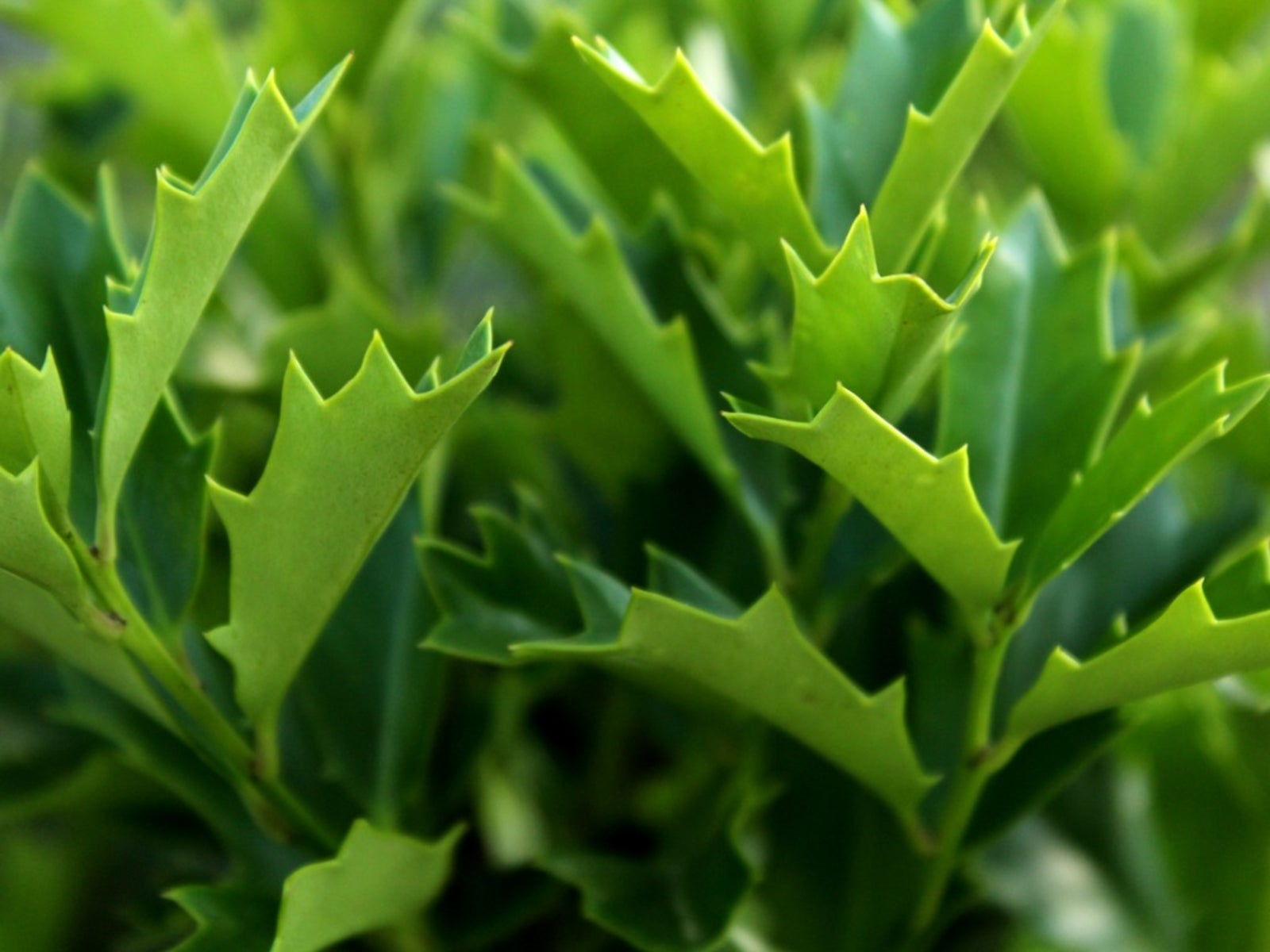Oak Leaf Holly Information : Learn How To Grow An Oak Leaf Holly Plant


Hollies are a group of glossy leaved plants with an excellent tolerance to shearing and bright berries. Oak Leaf holly (Ilex x “Conaf”) is a hybrid in the Red Holly series. It has outstanding potential as a standalone specimen or massed with others of its kind in a glorious hedge. According to Oak Leaf holly information, it was originally patented under the name 'Conaf' but the name was changed for marketing purposes. Read a bit further for help on growing Oak Leaf hollies and tips on their care.
Oak Leaf Holly Information
The Red Holly Series of cultivars feature bronze to burgundy new leaf growth. This characteristic, combined with their attractive form, makes the plants excellent ornamental specimens for the landscape. Oak Leaf is a member of the series introduction and has become a popular and easy-to-grow plant. This large shrub to small tree is self-pollinating, resulting in orange-red, pea-sized berries. To answer the question, "what is Oak Leaf holly," we need to understand where it came from. The plant came from an open cross and it is not sure who the parent plant might be; however, it was selected to become part of the Red Series by nurseryman Jack Magee in the mid-1990s. The highlight of the Red Series was the beautifully colored new growth. In Oak Leaf holly's case, the plant is also a hermaphrodite and does not need a male plant to set the glossy fruits. It can reach 14 to 20 feet (4 to 6 m.) and about half as wide, forming a lovely conical to pyramid shaped plant. Leaves are shiny with 3 to 5 serrated margins. Berries are ornamental but also attractive to birds as food.
How to Grow an Oak Leaf Holly
Oak Leaf holly needs full to partial sun in rich, well-draining soil that is slightly acidic. The holly tolerates almost any soil type as well as periods of drought. Keep the soil moist but not boggy. Infrequent, deep watering promotes a healthy root system. It is moderately cold hardy and may be grown in United States Department of Agriculture zones 6 to 9 but provide protection from strong wind. Hollies rarely need feeding. A balanced food or acid lover formula applied once in early spring is sufficient. The plant looks simply amazing when used in a hedge and responds well to frequent shearing. Growing Oak Leaf hollies in a group provides evergreen elegance combined with privacy hedge sharp leaves.
Additional Oak Leaf Holly Care
Hollies are stoic plants that are not bothered by much of anything. Oak Leaf holly has some sensitivity to several fungal diseases, such as powdery mildew and leaf spots. Combat with a registered fungicide. In soils with high pH, conditions such as chlorosis may occur. Add sulfur to soils that are high in pH to lower it and correct the condition. Pests are not much of a problem. You may find scale, whiteflies, spider mites and holly leaf miner. Insecticidal soaps or Neem oil are useful natural controls. Leaf drop and leaf scorch may occur where the plant is exposed to southern light or incorrect watering or fertilizing practices are used. For the most part, these hollies are fun plants in the landscape. You can leave them alone and enjoy their natural form, or shear them heavily into imaginative forms or professional hedges.
Gardening tips, videos, info and more delivered right to your inbox!
Sign up for the Gardening Know How newsletter today and receive a free copy of our e-book "How to Grow Delicious Tomatoes".

Bonnie Grant is a professional landscaper with a Certification in Urban Gardening. She has been gardening and writing for 15 years. A former professional chef, she has a passion for edible landscaping.
-
 Looking For Plants To Give You The Soft And Fuzzies? Try These 5 Fuzzy Leaf Plant Options
Looking For Plants To Give You The Soft And Fuzzies? Try These 5 Fuzzy Leaf Plant OptionsLovers of texture, drama, silver foliage and tactile plants will adore these special sensory garden additions. These fuzzy leaf plant options will leave you all aglow
By Susan Albert
-
 Get Ready For A Summer Of Hummers! Grow These Full Sun Hummingbird Plants and Flowers
Get Ready For A Summer Of Hummers! Grow These Full Sun Hummingbird Plants and FlowersIf you’re lucky enough to enjoy a sunny backyard, make sure you are maxing out on your pollinator opportunities and grow these full sun hummingbird plants and flowers
By Tonya Barnett